Click here for the offical website https://www.daigoji.or.jp/
Daigo-ji Temple
Daigo-ji is the head temple of the Shingon Daigo school, located in Fushimi-ku, Kyoto City, and has Yakushi Nyorai (the Healing Buddha) as its principal image.
Also known as Daigo-san (Mt. Daigo), the temple is situated southeast of Kyoto city and has a vast precinct that houses around 150,000 treasures of the temple.
It is also famous as the site of the “Daigo no Hanami” cherry blossom viewing event held by Toyotomi Hideyoshi and has been registered as a World Heritage Site.
Additionally, the Junidō (Hall of the 12 Zodiacs) at the nearby Kamigamo Shrine is the 11th temple of the Saigoku Sanjūsan-sho pilgrimage route and enshrines the Juichimen Kannon (11-faced Kannon) as its principal image.
醍醐寺
醍醐寺は、京都市伏見区に位置する真言宗醍醐派の総本山であり、薬師如来を本尊としています。この寺は醍醐山(深雪山)とも呼ばれ、京都市街の南東にあり、広大な境内を持ち、約15万点の寺宝を所蔵しています。また、豊臣秀吉による「醍醐の花見」が行われた場所としても知られ、世界遺産に登録されています。さらに、上醍醐の准胝堂は、西国三十三所第11番札所であり、准胝観世音菩薩を本尊としています。
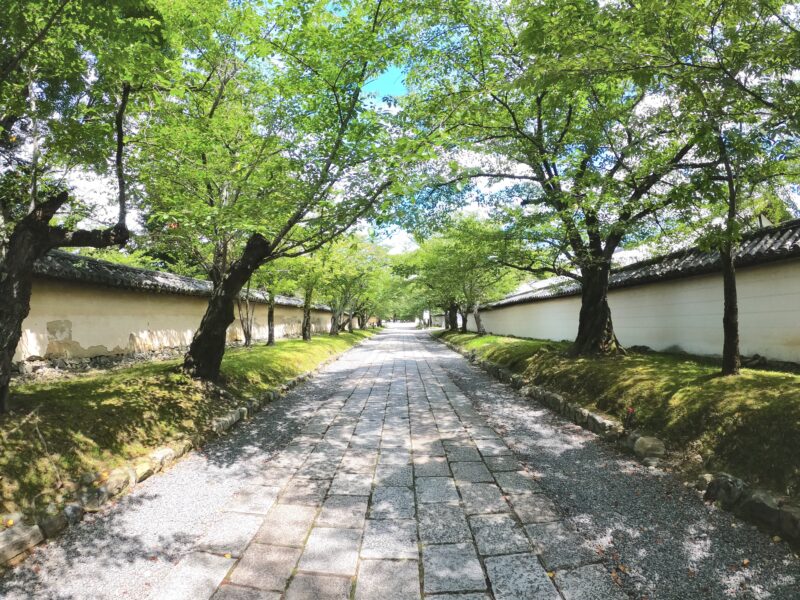
History
In 874, Saint Shobo founded Daigo Temple by enshrining Juntei Kannon and Nyoirin Kannon on the summit of Mount Daigo. Juntei Hall and Nyoirin Hall were built in 876. Daigo Temple developed as a sacred site for many Shugendo practitioners and received strong support from Emperor Daigo, who had Yakushi Hall built in 907. In 926, Shaka Hall was built, and the large temple complex “Shimo-Daigo” was established on the flatland at the foot of Mount Daigo. Daigo Temple prospered as one of the Daigo Five Monzeki, chosen by successive heads of the temple.
Shimo Daigo was devastated by events such as the Ōnin War, and only the five-storied pagoda remained. In 1469, a riot occurred in which villagers within the precincts demanded a reduction of their tribute to the temple by half, and warrior monks suppressed the riot. In the Azuchi-Momoyama period, Toyotomi Hideyoshi decided to hold cherry blossom viewing at Daigo-ji, and Sanbō-in was restored. In 1598, the “Daigo no hanami” festival was held grandly.
During the era of Toyotomi Hideyori, various renovations were carried out in Daigoji Temple, including the relocation of the main hall, reconstruction of the West Gate, and rebuilding of structures such as the Nyoirin Hall, Kaizan Hall, and Godaido. Despite the many temples that were abandoned or lost their treasures during the period of anti-Buddhist movements, Daigoji Temple managed to preserve its treasures. In 1935, the Reihokan Museum was opened, and although the Junshindo Hall was destroyed in a wildfire that struck Uedaigo in 1939, it was reconstructed in 1968.
In January 1995, the plaster on buildings such as the Goju-no-to and the Kondo in Kyoto was peeled off due to the Great Hanshin earthquake. Subsequently, in September 1997, the Shinnyo-Sanmyo-do was built. Furthermore, on August 24, 2008, the Junidaido at Kamigamo Shrine was completely destroyed by a lightning strike. The Nishikoku 33 Kannon temples, which were located in the Junidaido that was burnt down, are currently temporarily relocated to the Kannon-do in Shimogamo Shrine.
歴史
874年に聖宝が醍醐山頂上に准胝観音と如意輪観音を迎えて開山し、准胝堂と如意輪堂が876年に建立されました。醍醐寺は多くの修験者の霊場として発展し、醍醐天皇が手厚い庇護を与え、907年に薬師堂が建立されました。926年には釈迦堂が建立され、醍醐山麓の平地に大伽藍「下醍醐」が成立しました。醍醐寺は歴代座主から選ばれる醍醐五門跡から栄えました。
下醍醐は応仁の乱などで荒廃し、五重塔のみが残っていました。1469年、御境内の村民たちが寺に納める年貢を半分にする半済を要求する暴動が起こり、僧兵たちが弾圧を行いました。安土桃山時代になると、豊臣秀吉によって花見が醍醐寺で行われることに決まり、三宝院が再興されました。1598年には「醍醐の花見」が盛大に行われました。
豊臣秀頼の時代に、醍醐寺では金堂の移築や西大門の再建、如意輪堂、開山堂、五大堂の再建などの整備が行われました。廃仏毀釈の時代に多くの寺院が廃寺となったり寺宝が流失したりした中で、醍醐寺は寺宝を守り抜きました。1935年には霊宝館が開館し、1939年には上醍醐を襲った山火事で准胝堂が焼失しましたが、1968年に再建されました。
1995年1月、阪神・淡路大震災により、京都市の五重塔や金堂などの漆喰が剥がれました。その後、1997年9月に真如三昧耶堂が建立されました。更に、2008年8月24日には、上醍醐の准胝堂が落雷による火災で全焼しました。焼失した准胝堂にあった西国三十三所札所は現在、下醍醐の観音堂に仮に移されています。
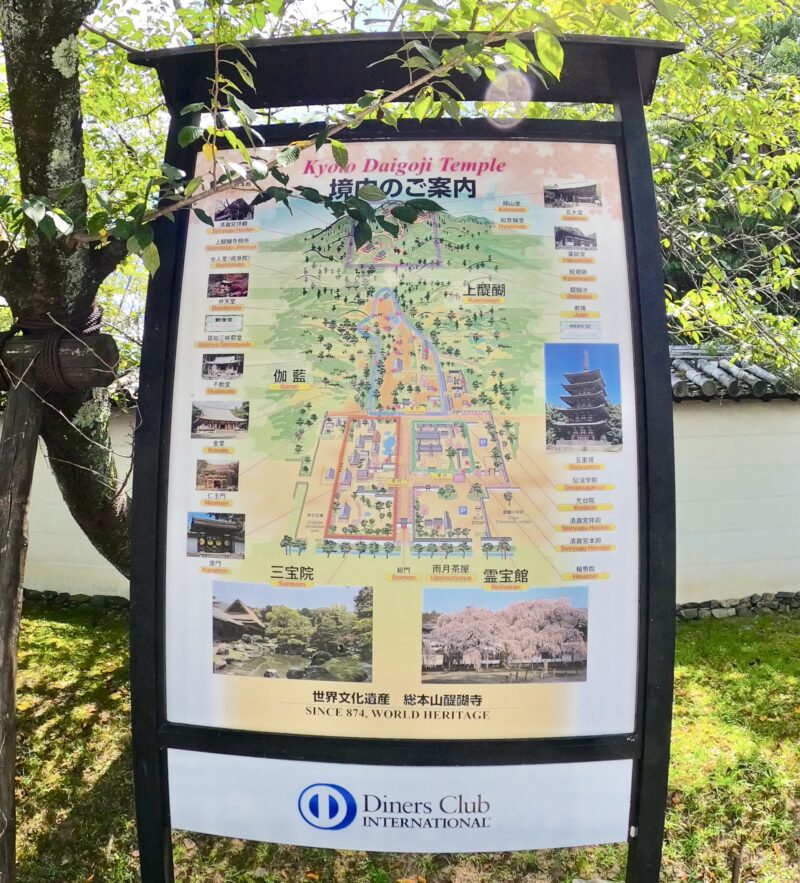
Shimo Daigo
Shimo Daigo, unlike Kami Daigo, has a luxurious grand temple complex centered around the Golden Hall and Sanboin where the main statue of Yakushi Nyorai is enshrined. Despite being almost completely burned down during the Onin War, it has been rebuilt and burned down repeatedly. However, the five-story pagoda remains unchanged from its original construction to this day. In addition, the murals inside the pagoda have been designated as national treasures, and the portrait of Kukai is the oldest surviving portrait of the same person.
下醍醐
下醍醐は、本尊の薬師如来像を安置する金堂や三宝院を中心に、上醍醐とは異なり、豪華な大伽藍が広がっています。応仁の乱でほぼ全焼した後、何度も焼失と再建を繰り返していますが、五重塔は現在も創建当時のまま残っています。また、五重塔内部の壁画は国宝に指定されており、空海像は同人の肖像としては現存最古のものです。
Sanbo-in
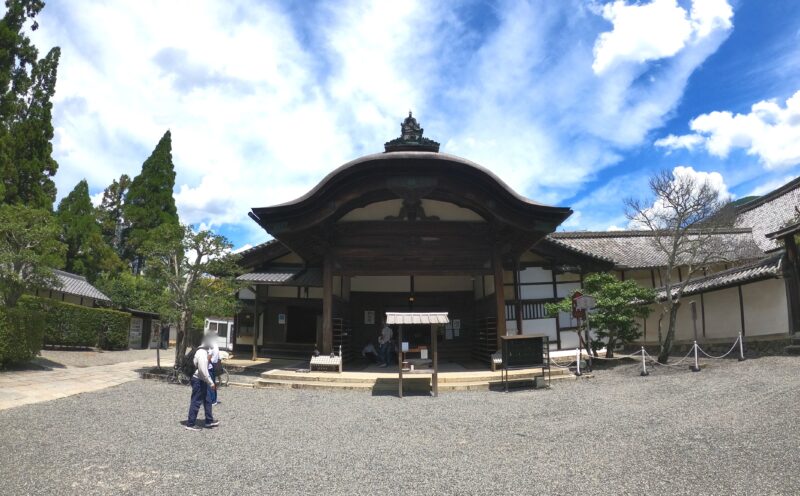
Sanbo-in is one of the sub-temples of Daigoji, a temple located in Fushimi-ku, Kyoto, and has several buildings designated as National Treasures.
It was founded in 1115 by Shokaku, the 14th abbot of Daigoji, as a consecration hall, and later renamed Sanboin. The name is said to originate from Shokaku receiving teachings from three different masters. In 1143, it became the temple of the retired Emperor Toba, and since Shokaku was of the Minamoto clan, it was initially considered a temple of the Minamoto clan. During the Nanboku-cho period, it produced high-ranking monks such as Joken, Kenjin, Jousai, and Kenshun, and received protection from Ashikaga Takauji.
The Main Hall (Mirokudo, an Important Cultural Property) is also known as Gomado and enshrines the principal image of Miroku Bodhisattva, which was created by Kaikei.
The garden “Sakezukushi no Niwa” is a moss garden.
The Junjo-kan (Important Cultural Property) is a building that was moved and reconstructed from the structure where Toyotomi Hideyoshi had a cherry blossom viewing party at Yariyama. The sliding door paintings were created by Hamada Taishu.
The Omote Shoin (National Treasure) is a building that was relocated from Nara during the cherry blossom viewing party at Daigo, and it represents the architectural style of a palace. The sliding door paintings were created by Ishida Yuutei, with the upper and middle levels being the works of the Hassegawa Touhaku school, while the lower level is also known as the “Agebutai no ma,” which is a raised tatami stage for Noh performances.
The Sanboin Garden (Designated Special Place of Scenic Beauty and Special Historic Site) is a chisen-kaiyu style garden, which is said to have been designed by Toyotomi Hideyoshi himself during his cherry blossom viewing party at Daigo, and the construction is also attributed to the famous garden designer, Toshiyoshi. It features three waterfalls and three stones of Kamo.
The Karamon (National Treasure) is an imperial messenger gate, which is hirakaramon style with a bark roof and black lacquer coating. It is a magnificent gate with a kinpaku paulownia crest on the main door and a chrysanthemum crest on the sides, and it is speculated that it was originally intended to be erected elsewhere but was built here due to some circumstances, as a result of its dismantling and repair work in 2011.
三宝院
醍醐寺の三宝院(だいごじのさんぼういん)は、京都市伏見区にある醍醐寺の塔頭(寺院の一部)のひとつで、国宝に指定された建物が多数あります。
1115年に醍醐寺14代座主勝覚によって灌頂院として創設され、後に三宝院と改名された。この名前は、勝覚が三人の師から法を伝えられたことに由来するとされる。1143年には鳥羽上皇の御願寺となり、勝覚が村上源氏の出身であったため、初期には代々源氏の寺院と考えられていた。南北朝時代には、成賢、憲深、定済、賢俊といった高僧を輩出し、足利尊氏からの保護を受けた。
本堂は、弥勒堂としても知られ、快慶作の本尊・弥勒菩薩像を安置しています。また、重要文化財に指定されています。
庭園「酒づくしの庭」は苔庭で、美しい景観で知られています。
純浄観は、豊臣秀吉が醍醐の花見の際に、槍山で花見をした時の建物を移築したものです。襖絵は、浜田泰介画伯によるもので、重要文化財に指定されています。
表書院は、国宝に指定されている能の楽屋を移築した建物で、寝殿造の様式を伝えています。襖絵は、石田幽汀が描いたもので、上段の間・中段の間は長谷川等伯一派の作、下段の間は別名「揚舞台の間」とも呼ばれ、畳を上げると能舞台になるとされています。
三宝院庭園は、国指定特別名勝・特別史跡に指定されている池泉回遊式庭園で、豊臣秀吉が醍醐の花見の際に自ら基本設計をして作庭したとされています。三段の滝や賀茂の三石が特徴です。
唐門は、国宝に指定されている勅使門で、平唐門、檜皮葺、黒漆塗りの豪壮な門です。正面扉には金箔の桐紋、その脇には菊紋が張り付けられています。2011年に行われた解体修理の結果、他の場所に建立する予定だったものが何らかの事情によりここに建立されたと推測されています。
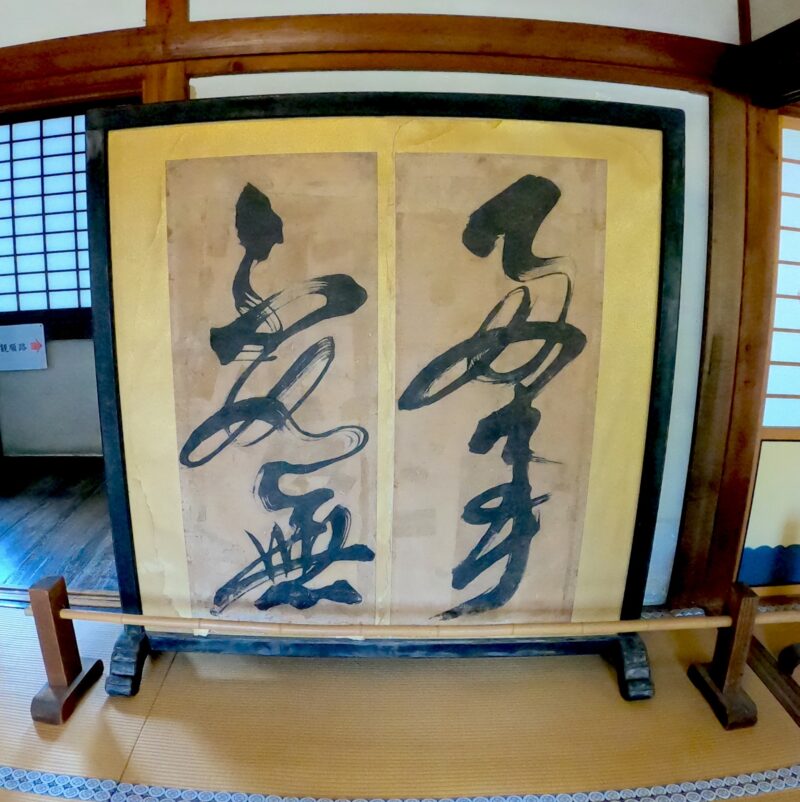
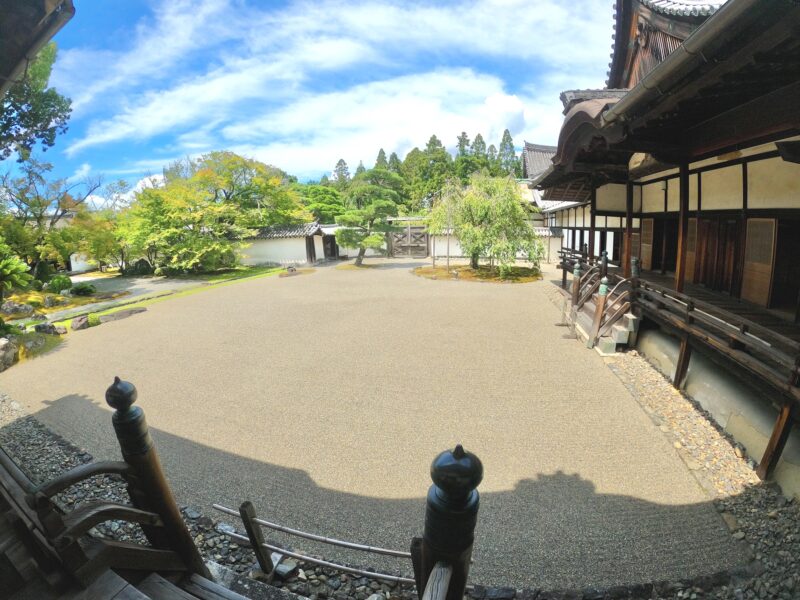
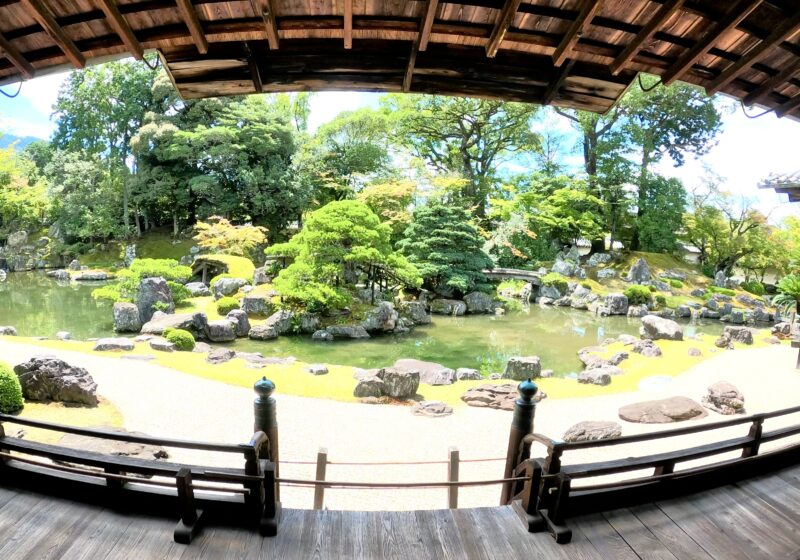
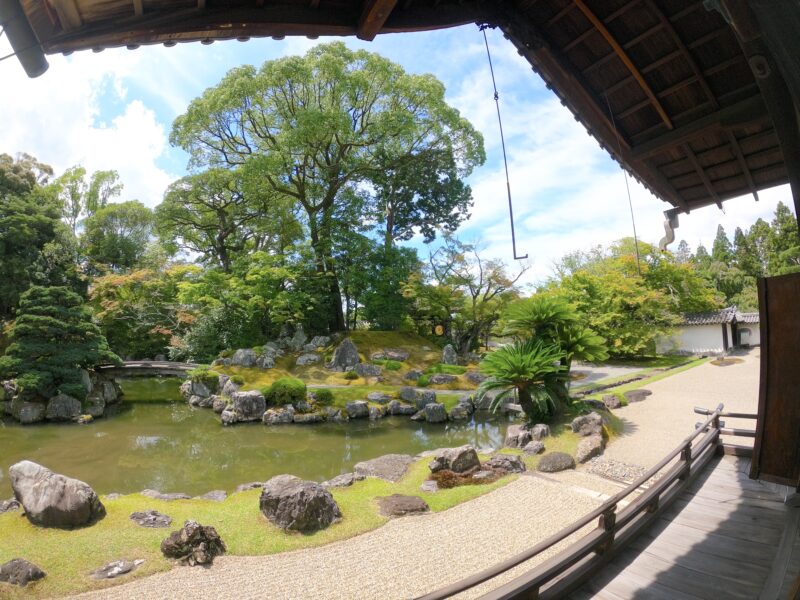
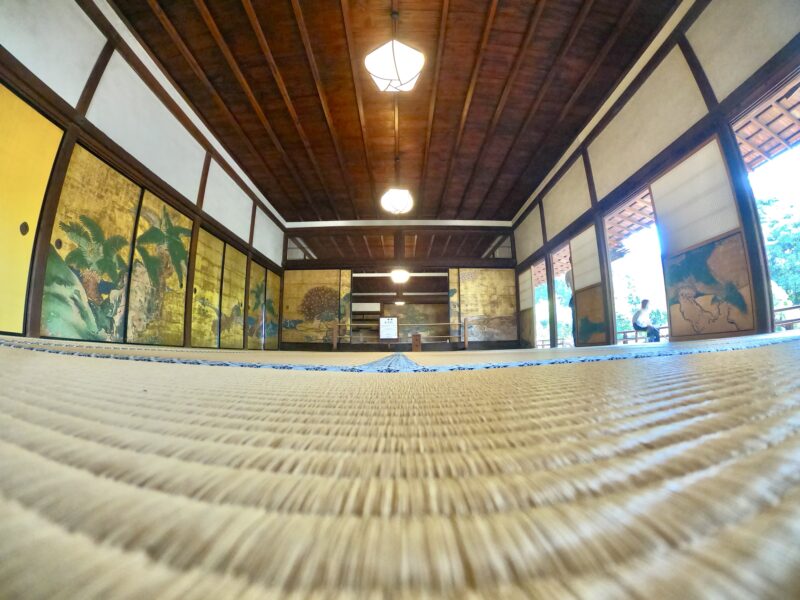
Cathedral 【Ga-Ran】
Upon passing through the main gate and the Niomon gate, a vast temple complex called Shimo Garan appears. The centerpiece is the Kondo, a building that was moved from Kishu (present-day Wakayama Prefecture) on the orders of Toyotomi Hideyoshi, retaining the architectural style of the late Heian period. The Yakushi Nyorai statue and the two attendants on either side were created during the Kamakura period and have been designated as important cultural properties. The Goju-no-to, a national treasure five-story pagoda, is said to represent the source of Japanese esoteric painting with its interior wall paintings, and is the oldest wooden building in Kyoto Prefecture. In addition, there are the Seiryu-gu Main Hall and many other buildings on the temple grounds. The Kami Dai Go and Shimo Dai Go areas contain six national treasures and ten important cultural properties, which continue to watch over the long history of Daigoji Temple.
伽藍
総門を通り仁王門をくぐると、広大な下伽藍が現れます。主要部は平安末期の様式を残した豊臣秀吉の命によって紀州(現在の和歌山県)から移築された金堂が中心で、薬師如来と両脇侍は鎌倉時代の作で、重要文化財に指定されています。また、国宝の五重塔は、内部の壁画は日本密教絵画の源流をなすものといわれ、京都府下最古の木造建造物であり、その他にも清瀧宮本殿や多くの堂宇があります。上醍醐、下醍醐の伽藍には、6棟の国宝と10棟の重要文化財の建物があり、醍醐寺の長い歴史を見守り続けています。
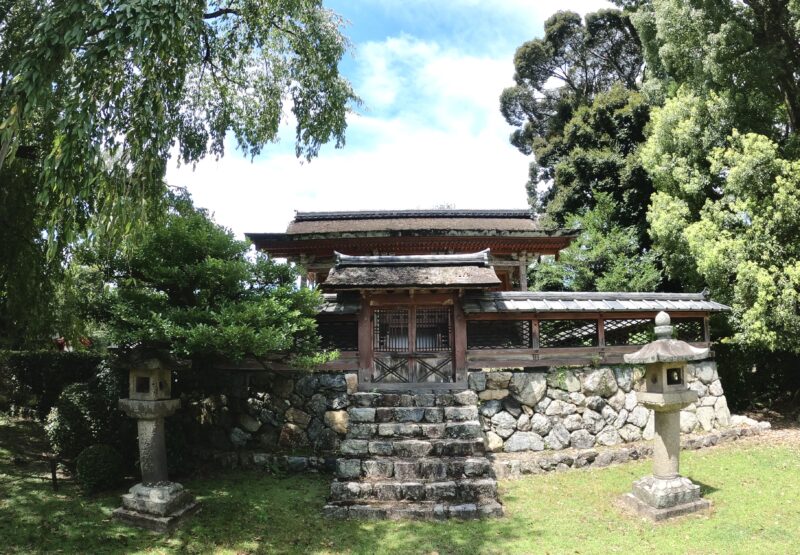
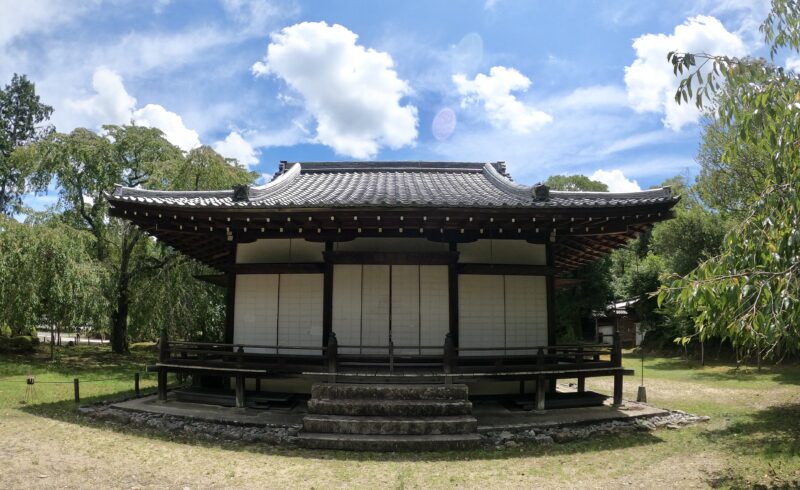
Kondo Hall
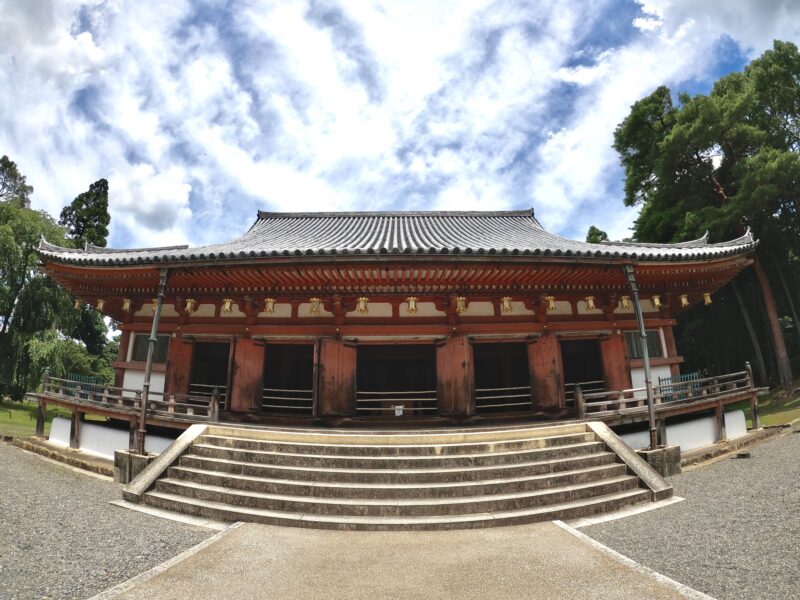
Kondo Hall, a national treasure, was originally built in the late Heian period and was relocated from Kii Province upon the request of Toyotomi Hideyoshi. Originally located at Mang’anji temple in Yuasa-cho, Arita-gun, Wakayama Prefecture, it was scheduled to be burned down when Hideyoshi conducted his campaign in Kishu. However, it was avoided by the condition that the building of Mang’anji temple would be surrendered in exchange for the reconstruction of Daigoji’s Kondo Hall, which Gien desired. The characteristic of the Kondo Hall is its exceptional design and lack of unity in its wooden joinery. Inside the hall, there are enshrined a principal image of Yakushi Nyorai, statues of Nikko Bosatsu, Gekko Bosatsu, and the Four Heavenly Kings. The hall is also unique in that there is no boundary or partition between the inner sanctuary and the outer sanctuary (worship hall), creating a unified space. The Kondo Hall of Daigoji was first built in 926 and has been burned down twice.
金堂
平安時代後期に建てられ、豊臣秀吉が発願し、紀伊から移築された国宝です。当初は和歌山県有田郡湯浅町の満願寺本堂でしたが、秀吉が紀州征伐を行った際には焼き討ちされる予定でした。しかし、義演が醍醐寺金堂の再建を望んだため、満願寺の建物を差し出すことを条件にして回避されました。金堂の特徴は異例の意匠を持ち、組物が統一されていないことです。内部には本尊・薬師如来坐像や日光菩薩・月光菩薩と四天王像が安置されており、内陣と外陣(礼堂)の境に結界や間仕切りがなく、一体の空間とする点に特色があります。醍醐寺金堂の創建は926年で、2度焼失しています。
The Five-Storied pagoda 【Goju-no-To】
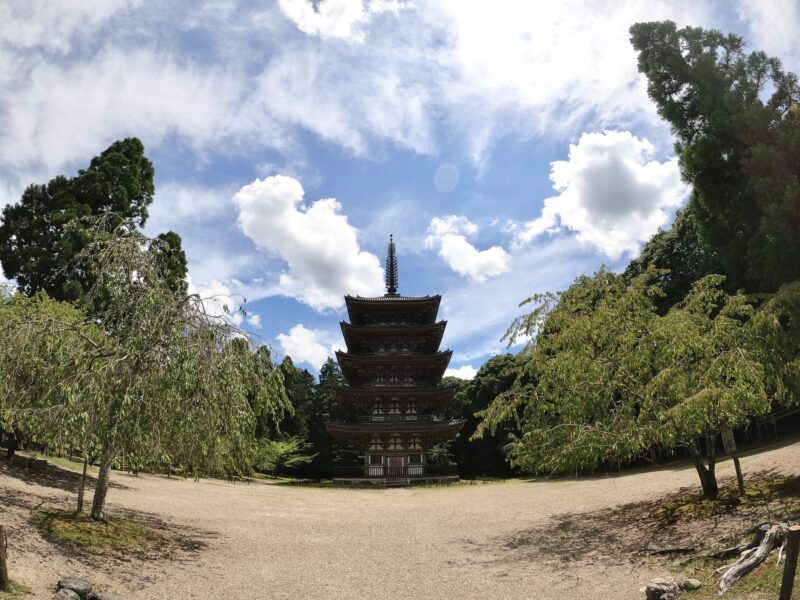
The Five-Storied pagoda is a national treasure completed in 951 during the late Heian period, and was built to pray for the peace of Emperor Daigo’s soul. Construction continued for over 20 years and was completed under Emperor Suzaku. The tower is 38 meters high and the sorin (decorative finial) section occupies more than 30% of the total height, giving it a different appearance from later pagodas that are lower and wider. The pagoda has been repaired many times and suffered significant damage in the Tensei earthquake, but was restored with the assistance of Toyotomi Hideyoshi. Moreover, the inside of the pagoda features Heian-period paintings of the mandalas of the Two Realms and the Eight Vidyarajas, designated as national treasures. The Five-Story Pagoda is the oldest wooden structure in Kyoto Prefecture and is a valuable example of Heian period architecture.
五重塔
平安時代後期の951年に完成した国宝であり、醍醐天皇の冥福を祈るために発願されたものです。工事は20年以上にわたって進行せず、朱雀天皇によって完成されました。塔は38メートル高く、相輪部が全体の3割以上を占めており、後世の塔とは異なる低く広がった外観をしています。塔は何度も修理され、天正地震では甚大な被害を受けましたが、豊臣秀吉による援助を受けて修理が完了しました。また、塔内には両界曼荼羅と真言八祖を表した平安絵画が現存しており、国宝として指定されています。五重塔は、京都府下最古の木造建造物であり、貴重な平安時代建築の一つです。
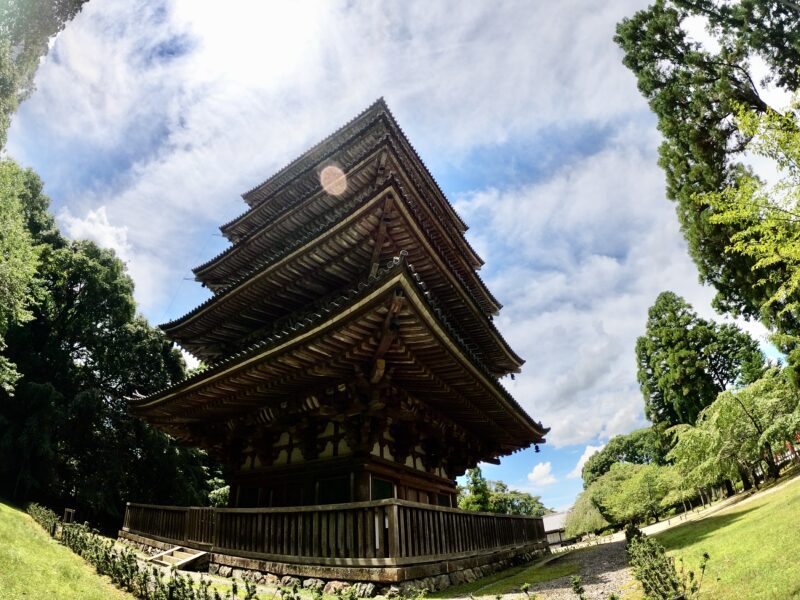
Kami Daigo
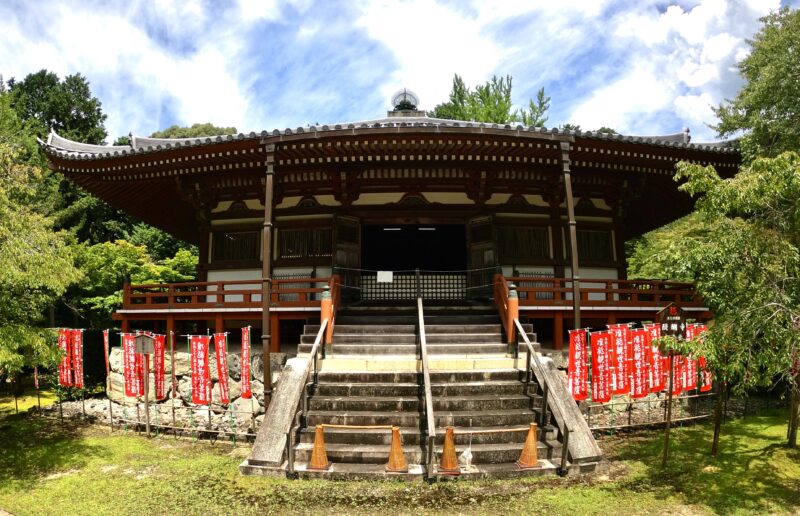
Kami Daigo is a temple located in a steep mountainous area that was once known as the 11th temple of the Saigoku Sanjusansho pilgrimage route. It had a “women’s barrier” and a hall specifically designated for women. Even today, important cultural properties such as the Yakushi Hall, Seiryu-gongen Hall, Suitedo Hall ruins, and Godaido Hall remain, and the famous “Daigo-no-mizu” spring still flows. At the summit, the Nyoirin Hall and Kaizan Hall stand side by side, and there is also an inner sanctuary.
上醍醐
上醍醐は、かつて西国三十三所第11番札所として知られた険しい山間の寺院です。女人結界があったため、女人堂が置かれていました。現在でも、国宝に指定された薬師堂や清瀧権現拝殿、准胝堂跡、五大堂などが残っており、「醍醐水」も湧き出ています。山頂には如意輪堂と開山堂が並び、奥の院もあります。
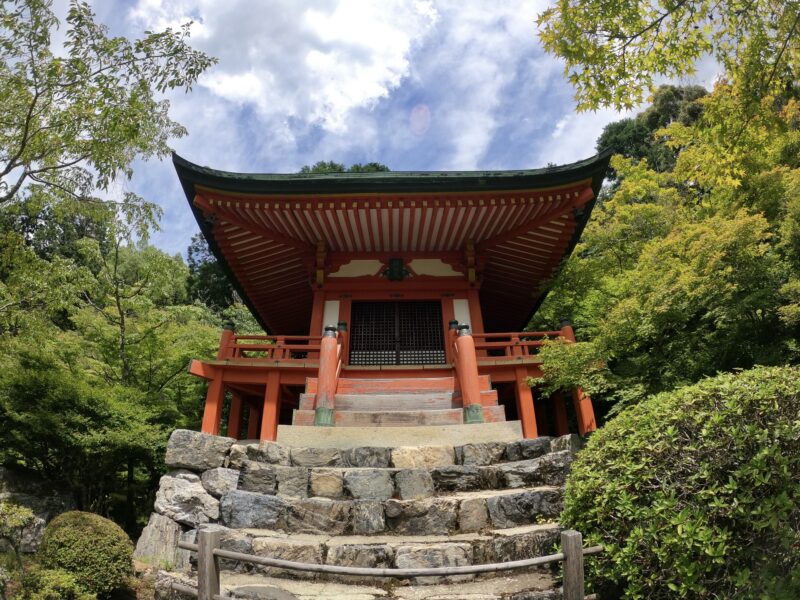
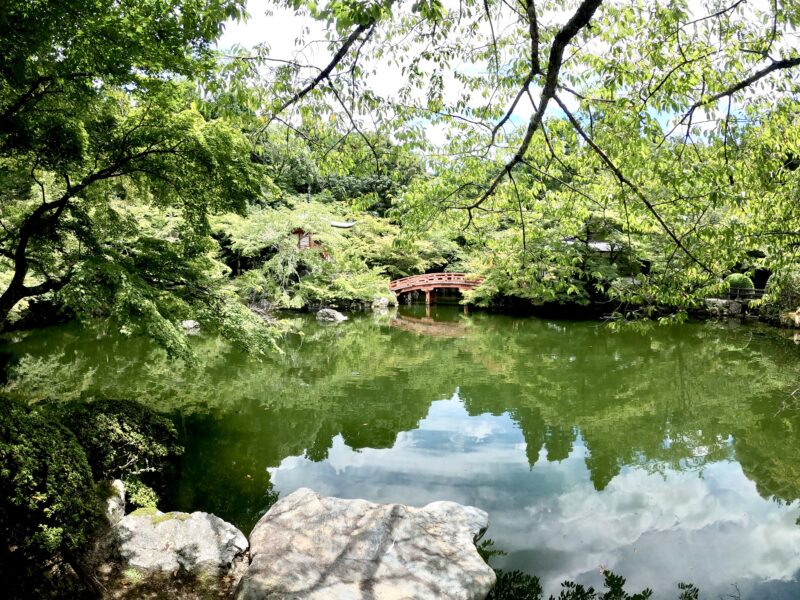

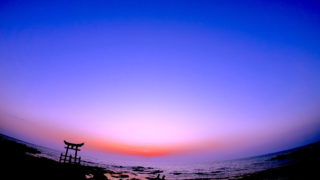



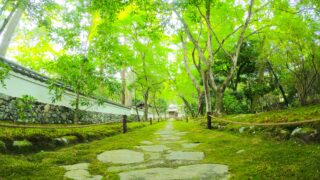

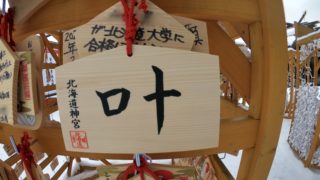
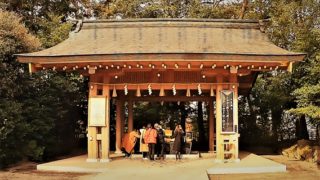

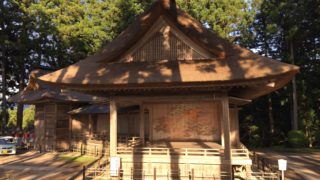

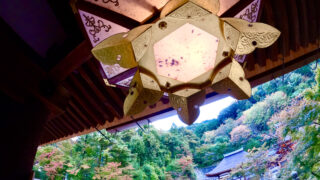
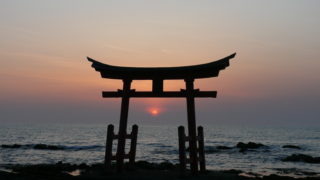
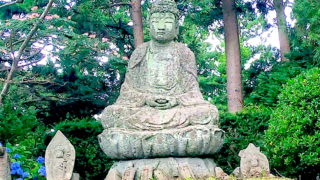
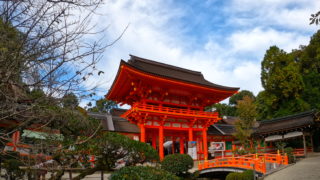
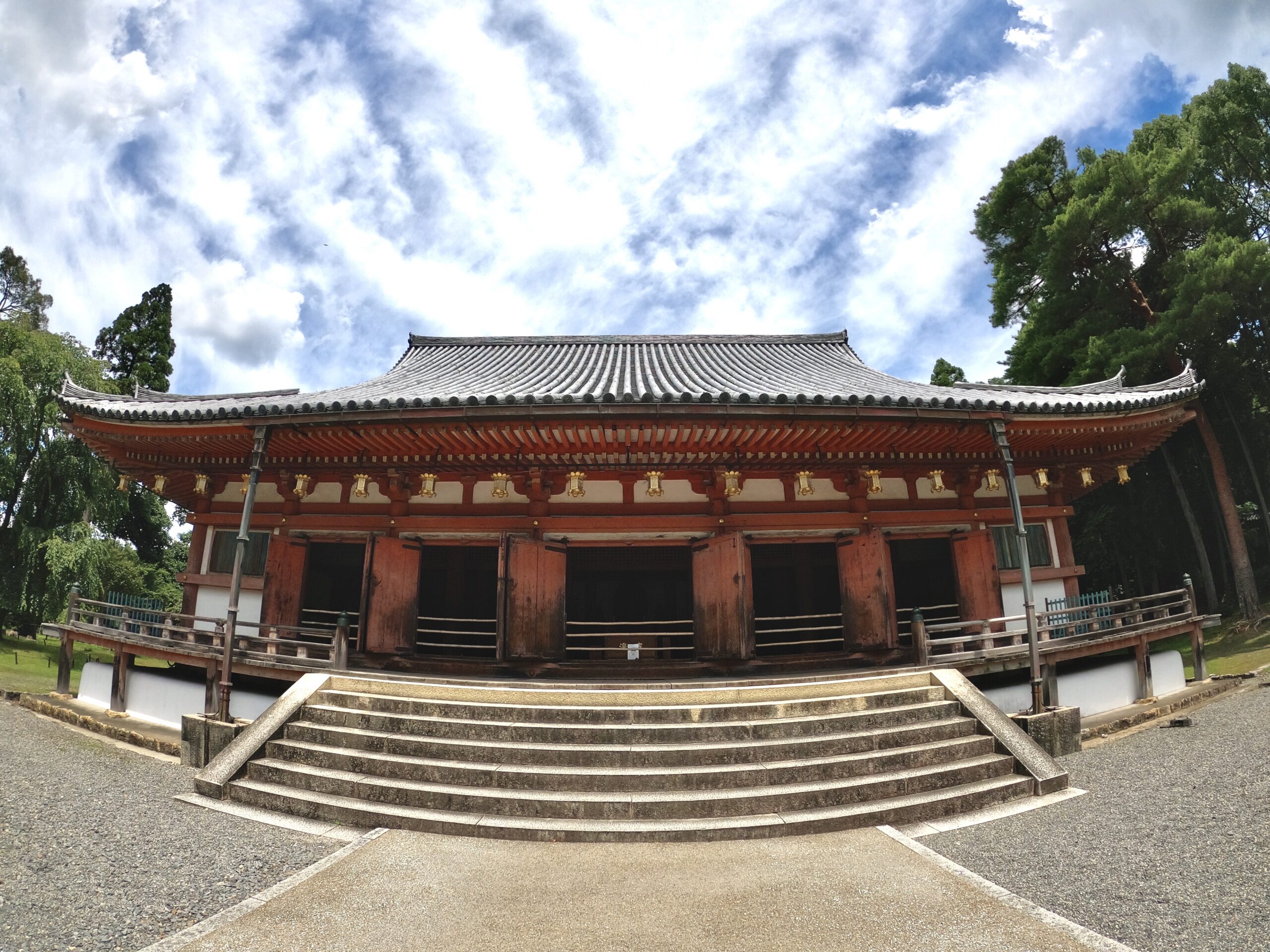



コメント